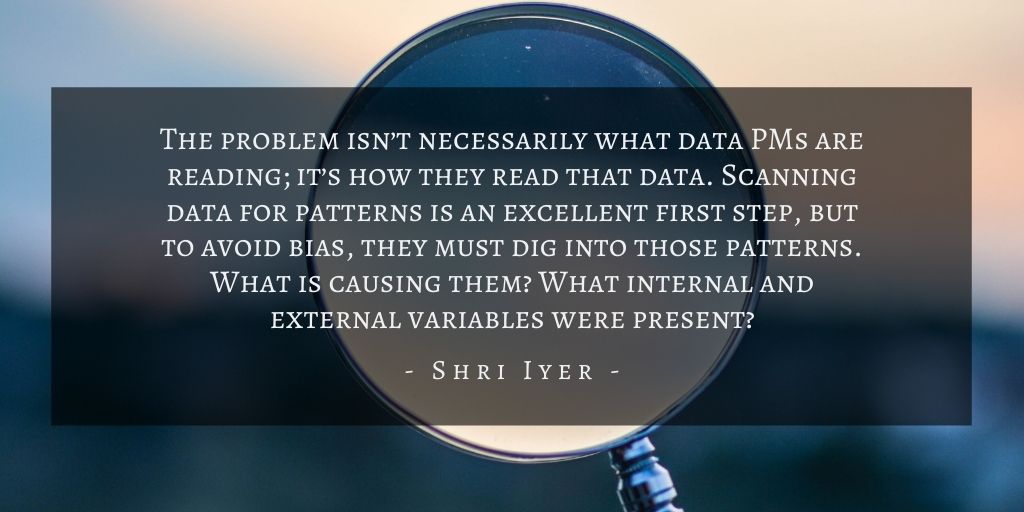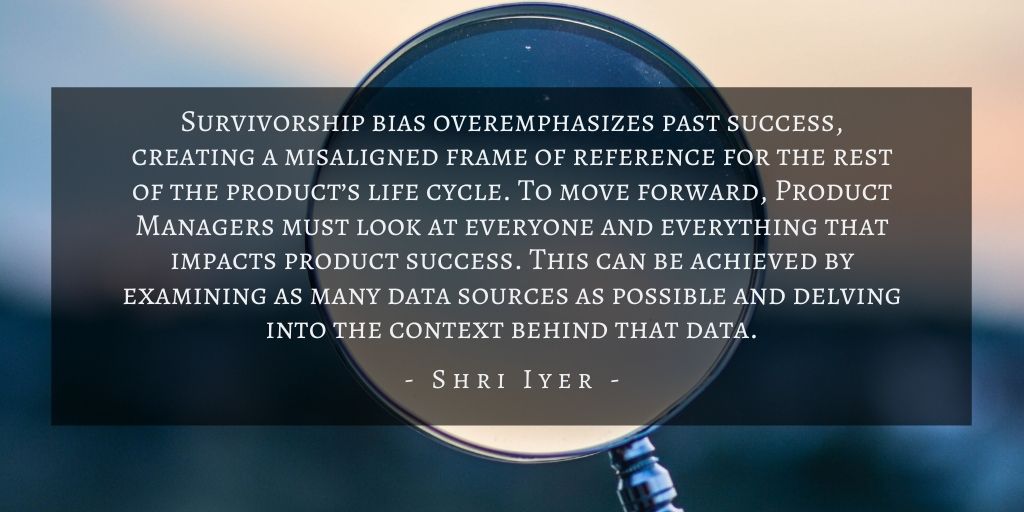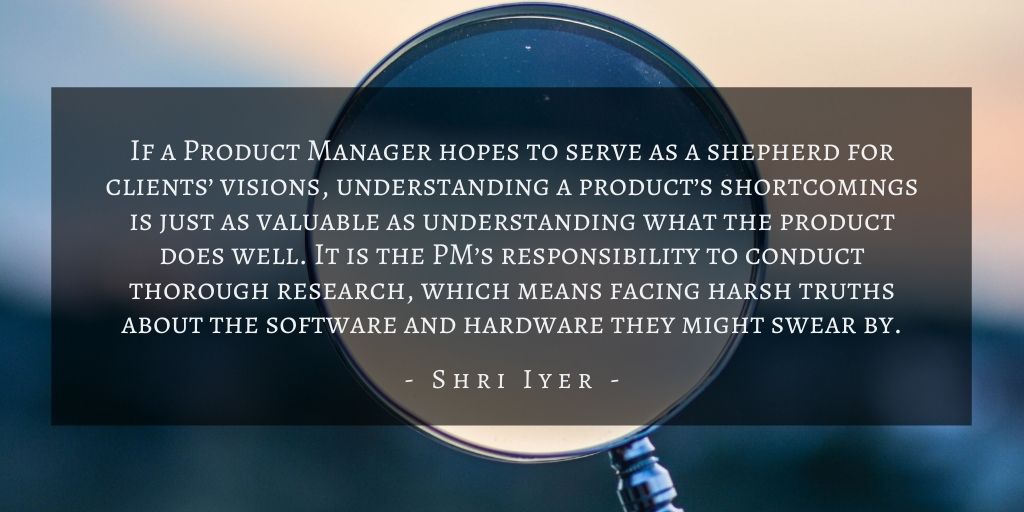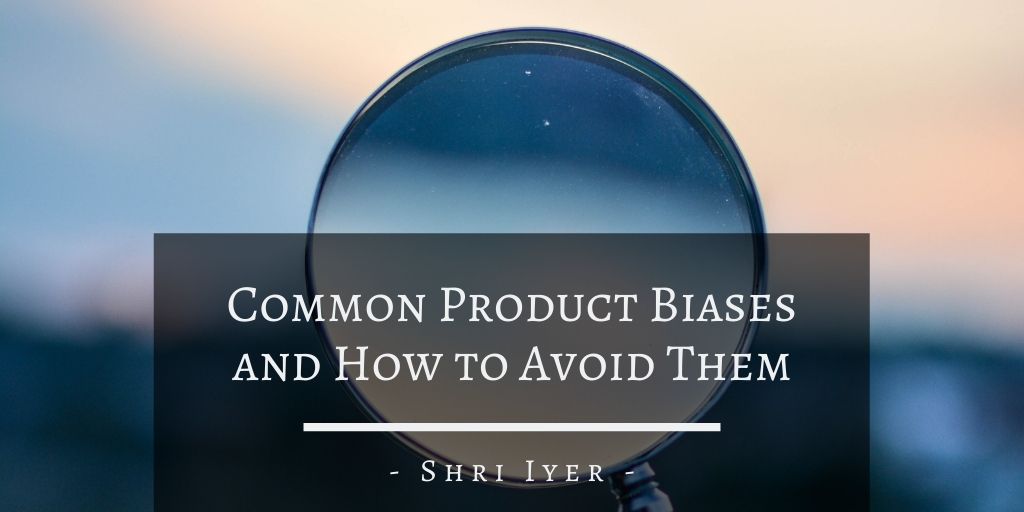Every professional is fallible—even Product Managers! But in the world of product, the ability to polish a product from brainstorming to sales is crucial. Cognitive biases are common issues faced by PMs and their respective products. The best way to overcome these biases is by relying upon data; however, these biases often stem from a misinterpretation or misrepresentation of data. What biases are the most common, and how can Product Managers overcome them?
Cognitive Bias
“Cognitive bias” is an umbrella term for any garden-variety judgment flaw. Coined in the 1970s by psychologists Amos Tversky and Daniel Kahneman, “cognitive bias” originally applied to decision-making in economics. However, the bandwagon effect, curse of knowledge, and more have proven applicable across countless industries.
In Product Management, cognitive biases stem from the misreading of data. As eBay’s Director of Product Clémence Tiradon says, “In order to make quick decisions, the brain resorts to glasses of bias and past experiences. All humans are biased, and that’s ok.” Although Clémence graciously forgives us for our biases, PMs are responsible for analyzing data, deciphering patterns, and facilitating decisions. As such, it’s essential to understand and override cognitive biases.

The problem isn’t necessarily what data PMs are reading; it’s how they read that data. Scanning data for patterns is an excellent first step, but to avoid bias, they must dig into those patterns. What is causing them? What internal and external variables were present?
Additionally, PMs must understand that every piece of data matters. Peaks and troughs are essential, certainly, but what about plateaus? Metrics with minimal changes can reveal valuable information, even if they don’t appear visually impactful.
Survivorship Bias
Some cognitive biases are so nuanced, they have earned their own names. The survivorship bias often rears its head in the world of products, most noticeably when teams must review processes or product features.
As product teams travel along the product roadmap, they will inevitably make decisions that shift or shave off features. A common misconception about cutting-room floor features is that they cannot match the features that succeed. In essence, survivorship bias is believing that long-lasting features are inherently good because they have “survived” past decision-making.
This bias applies to customers, buyers, and end-users as well. Teams may focus on serving the customers that have “survived” different iterations of the product, completely overlooking potential faults that resulted in losing non-customers.

Sheana Ahlqvist, the Senior UX Researcher at Whip Media Group, writes that “survivorship bias narrows your field of vision, so that you’re making decisions based on incomplete information, ignoring key evidence from the failures and cases that don’t make it through.”
Survivorship bias overemphasizes past success, creating a misaligned frame of reference for the rest of the product’s life cycle. To move forward, Product Managers must look at everyone and everything that impacts product success. This can be achieved by examining as many data sources as possible and delving into the context behind that data.
Confirmation Bias
Confirmation bias occurs when individuals attempt to justify reasoning by exclusively seeking out sources that agree with their point of view. If a Product Manager wants to add a chat feature to their software product and seek out articles about how great it is for software to include chat features, they have fallen victim to confirmation bias.

Lauren Mullaney-Reid is MojoTech’s Product Manager. In her article on common PM biases, she re-contextualizes the Product Manager role for discussions of bias:
“As a product manager, our job is to shepherd the client’s vision to help make it a reality, and along the way make suggestions and improvements based on our research and our own experiences.”
If a Product Manager hopes to serve as a shepherd for clients’ visions, understanding a product’s shortcomings is just as valuable as understanding what the product does well. It is the PM’s responsibility to conduct thorough research, which means facing harsh truths about the software and hardware they might swear by.
Experience Bias
This bias is similar to confirmation bias, in that individuals try to justify fallacious reasoning. However, the key difference is that experience bias draws from one’s own experiences and successes to validate reasoning. For instance, if a seasoned colleague offers feedback on a product feature, attempts to fit the product to this colleague’s vision may be categorized as stemming from experience bias.
According to Freshdesk Inc. PM Saurabh Gupta, experience bias is the ultimate killer of creativity for PMs. Objectivity is key when taking feedback and outside opinions on a product. PMs must take the “grain of salt” approach while remaining open to change.

Like most things in the world of product, listening to feedback from a senior colleague requires some degree of balance. The subjective opinions of colleagues and consumers should be paired with objective data. After all, past experiences are not necessarily accurate to your niche or market.
Conclusion
Cognitive biases don’t just impact how teams use roadmaps—they change how PMs create them. Information and data are fluid, and strategy should be able to adapt. Luke Gallimore, the Head of Product Management at Nodes, describes cognitive biases as the result of “mental shortcuts.” Product Managers are less likely to recognize biases, as they take mental shortcuts and leave less room for second-guessing or doubt. Thus, PMs cannot rely solely on what they want for the product, nor can they base all decisions on what the majority wants. Product Managers must look at every iota of data to make informed decisions. That is the path to success.

